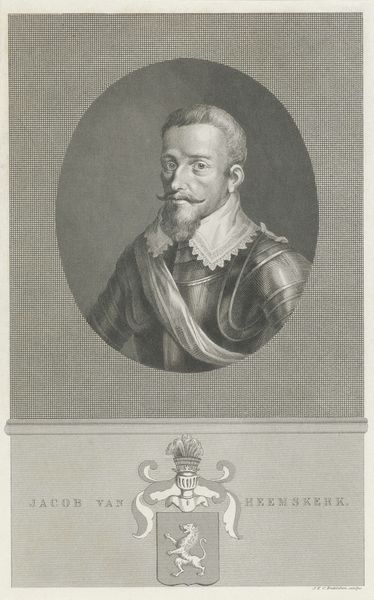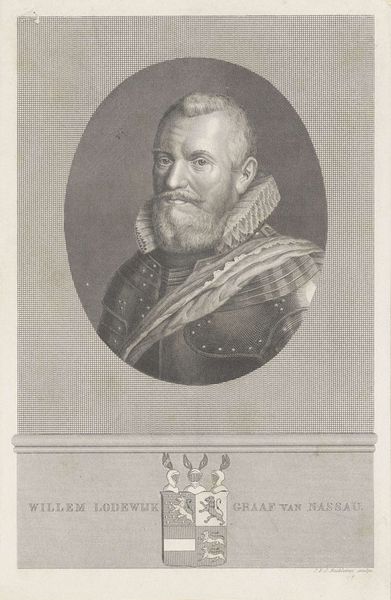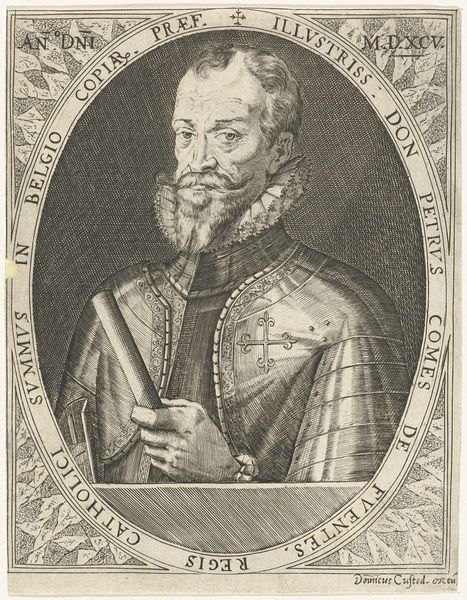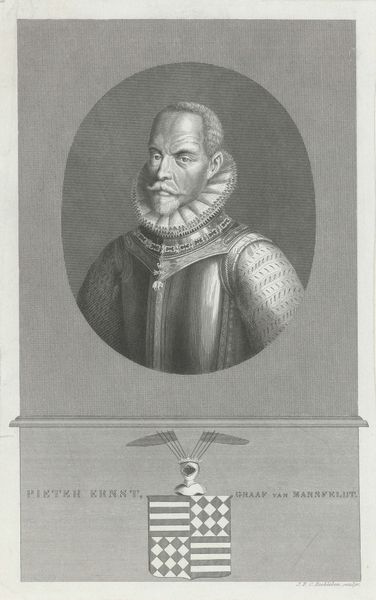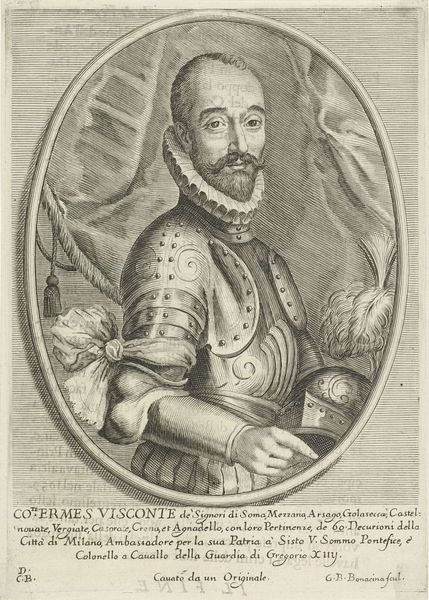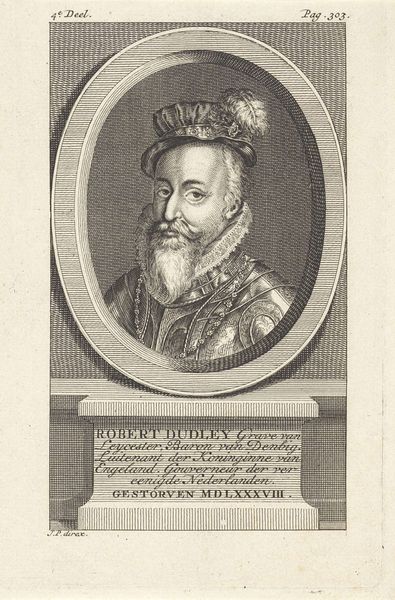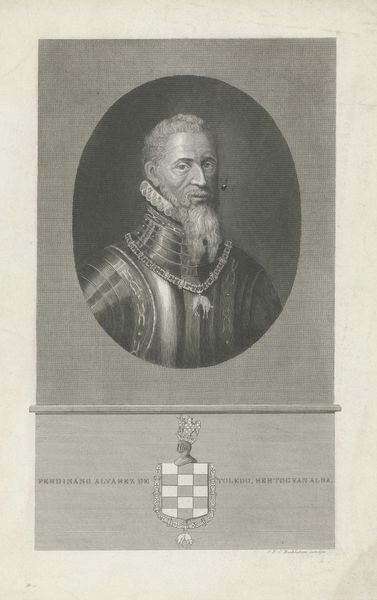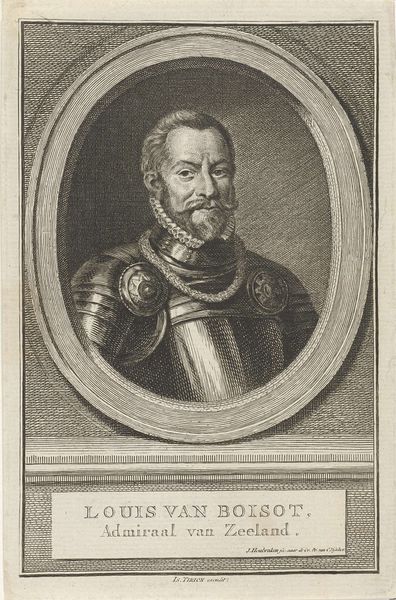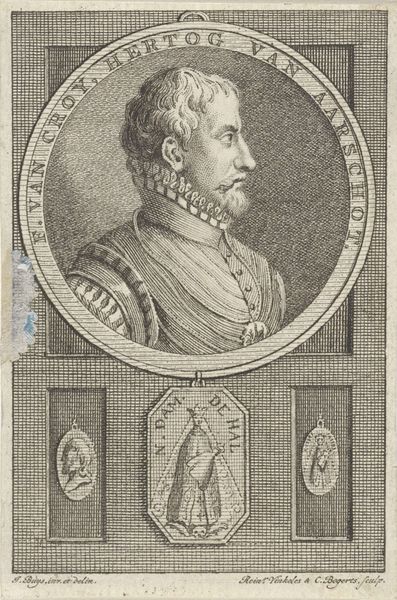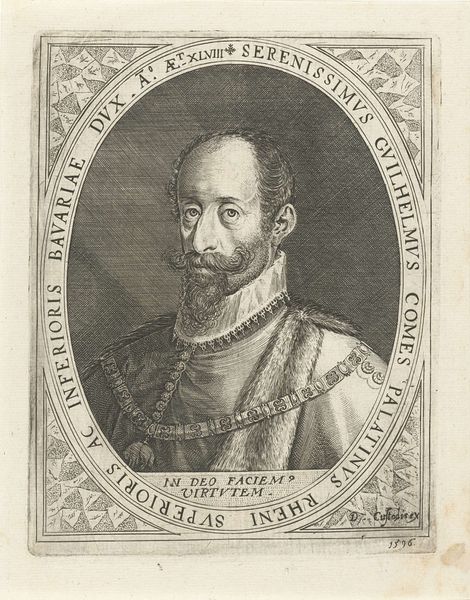
Portret van Robert Dudley, graaf van Leicester 1853 - 1855
0:00
0:00
janfrederikchristiaanreckleben
Rijksmuseum
print, engraving
#
portrait
# print
#
figuration
#
historical fashion
#
line
#
history-painting
#
engraving
#
realism
Dimensions: height 240 mm, width 152 mm
Copyright: Rijks Museum: Open Domain
Curator: I’m immediately struck by the detail, especially in the armor and ruff, there's a severity here. Editor: Indeed. Let’s delve into this engraving, “Portret van Robert Dudley, graaf van Leicester,” created between 1853 and 1855 by Jan Frederik Christiaan Reckleben. The artwork lives here at the Rijksmuseum, reminding us of Leicester's enduring, and often controversial, influence. What historical context informs this imposing figure, do you think? Curator: His undeniable status as favorite of Queen Elizabeth is the central, often disruptive, element. I’d be very interested in thinking about him in relation to other male figures who wielded disproportionate influence at court. It can certainly tell us something about female power structures and leadership styles. The choice of the engraver to create such an…intense… representation is quite fascinating as well. Editor: Well, look at the lines – sharp and precise, constructing the portrait from very fine networks that create texture. There is definitely a deliberate choice here, a statement, to imbue him with power, resilience. What’s your take on how such intense line-work contributes to the overall affect here? Curator: Absolutely, the execution reinforces ideas about steadfastness and power which resonates well with familiar narratives that circulate even now. It can be argued that Leicester had his share of detractors as a result of some serious court machinations. Reckleben’s technical skill is put in service of creating and reinforcing what some may call ‘myth’. Editor: Very persuasive. To me, I keep coming back to the texture. Consider how the gradations of gray are deployed across the print’s surface, mimicking both the sheen of metal and softness of beard or fur, a duality expressed visually. Curator: I agree completely. Thinking about this print in the context of, for example, other portraits that place the figure more centrally – such as his sovereign. And it is equally worthwhile to question who has access and for whom this print may have been created. Who were his supporters at this time? The historical, contextual framing illuminates more clearly the intentionality here. Editor: So, while this work appears a simple portrait initially, delving into its artistic choices and their relation to historical narratives and material context opens richer understanding and interpretations about Leicester’s enduring legacy. Curator: It becomes clear that this object carries tremendous significance; not only because it documents an historical figure, but that it illuminates the very construction of those figures that still informs contemporary life.
Comments
No comments
Be the first to comment and join the conversation on the ultimate creative platform.
